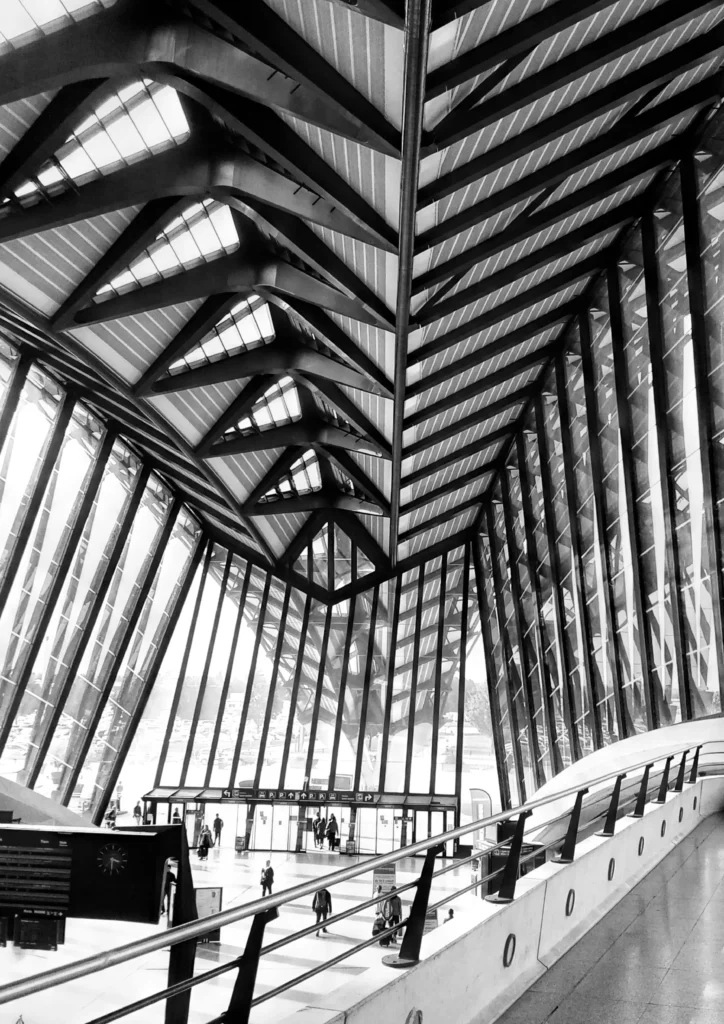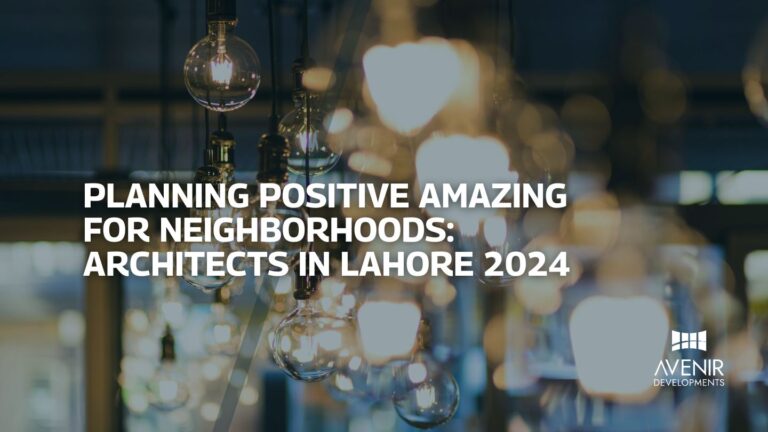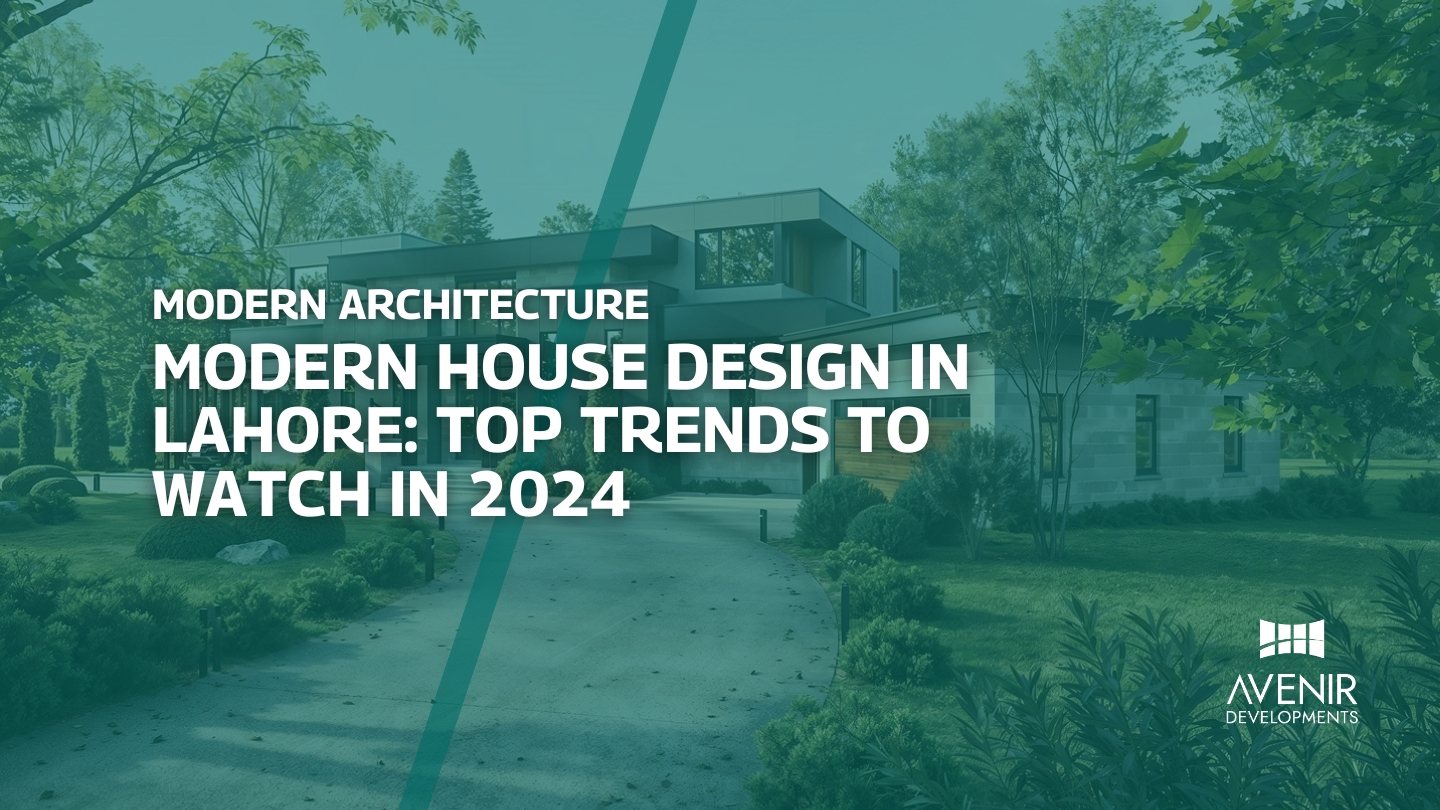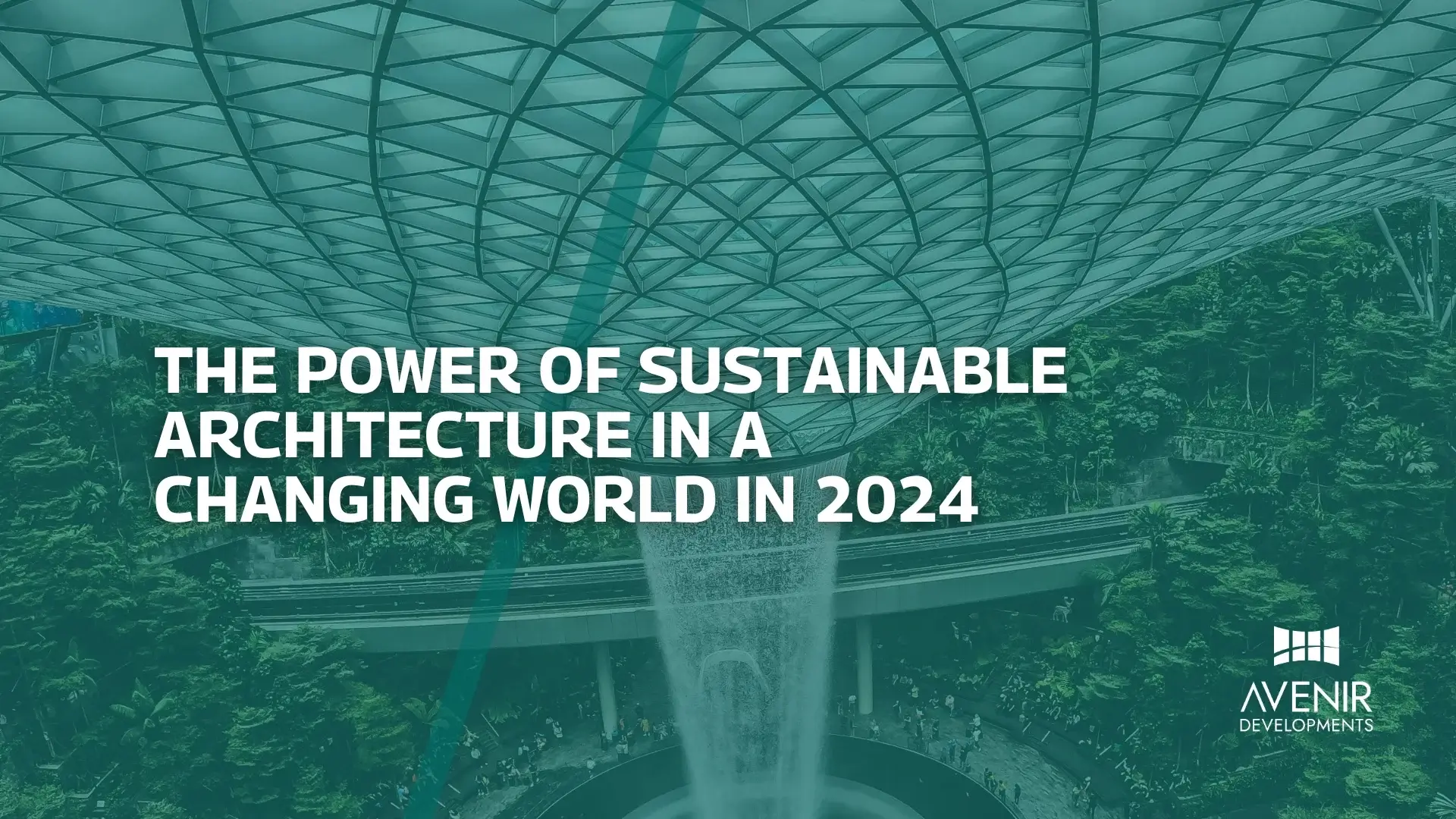Big cities are changing faster because more people are shifting there from the smaller ones say the Architects in Lahore. This makes planning communities more important and harder. Designing neighbourhoods and city plans is key to shaping these changing cities.
Lahore, a city steeped in history and culture, is undergoing a period of rapid urbanization. As the city grows, the need for well-planned and sustainable neighborhoods becomes increasingly important. Architects play a crucial role in shaping the future of Lahore, designing spaces that not only enhance the city’s aesthetics but also improve the quality of life for its residents.
In 2024, architects in Lahore are at the forefront of innovative urban planning initiatives. They are working closely with local governments, developers, and community groups to create neighborhoods that are both functional and desirable. By incorporating sustainable practices, incorporating green spaces, and prioritizing pedestrian-friendly design, architects are striving to create communities that are resilient, inclusive, and enjoyable to live in.

One of the key trends in Lahore’s architectural landscape is the growing emphasis on mixed-use development. This approach combines residential, commercial, and cultural spaces within a single development, fostering a sense of community and reducing the need for long commutes. By integrating various land uses, architects can create vibrant and dynamic neighborhoods that meet the diverse needs of residents.
Another important aspect of urban planning in Lahore is the creation of green spaces. Parks, gardens, and tree-lined streets not only enhance the city’s aesthetic appeal but also provide numerous environmental and social benefits. Green spaces help to improve air quality, mitigate climate change, and promote physical and mental well-being. Architects are incorporating green infrastructure into their designs, creating sustainable and resilient neighborhoods that are enjoyable for residents of all ages.
Lahore, a city steeped in history and culture, is experiencing a period of rapid urbanization. As the city grows, the need for well-planned and sustainable neighborhoods becomes increasingly important. Architects play a crucial role in shaping the future of Lahore, designing spaces that not only enhance the city’s aesthetics but also improve the quality of life for its residents.
In 2024, architects in Lahore are at the forefront of innovative urban planning initiatives. They are working closely with local governments, developers, and community groups to create neighborhoods that are both functional and desirable. By incorporating sustainable practices, incorporating green spaces, and prioritizing pedestrian-friendly design, architects are striving to create communities that are resilient, inclusive, and enjoyable to live in.
One of the key trends in Lahore’s architectural landscape is the growing emphasis on mixed-use development. This approach combines residential, commercial, and cultural spaces within a single development, fostering a sense of community and reducing the need for long commutes. By integrating various land uses, architects can create vibrant and dynamic neighborhoods that meet the diverse needs of residents.
For example, mixed-use developments can include residential apartments, retail stores, offices, restaurants, and cultural facilities. This integration can create a lively and walkable environment where residents can easily access essential services and amenities without relying on cars. Additionally, mixed-use developments can contribute to the local economy by generating jobs and attracting businesses.
Another important aspect of urban planning in Lahore is the creation of green spaces. Parks, gardens, and tree-lined streets not only enhance the city’s aesthetic appeal but also provide numerous environmental and social benefits. Green spaces help to improve air quality, mitigate climate change, and promote physical and mental well-being. Architects are incorporating green infrastructure into their designs, creating sustainable and resilient neighborhoods that are enjoyable for residents of all ages.
Green infrastructure can include features such as green roofs, rain gardens, community gardens, and tree-lined streets. These elements can help to reduce stormwater runoff, improve air quality, and create a more pleasant and livable environment. Additionally, green spaces can provide opportunities for recreation, social interaction, and education.
By prioritizing sustainability, mixed-use development, and green infrastructure, architects in Lahore are working to create neighborhoods that are not only beautiful but also functional, resilient, and enjoyable to live in. These initiatives are helping to shape the future of Lahore and ensure that the city continues to be a vibrant and thriving metropolis.
The mission is to demonstrate the creativity that will lead to spaces that work well and last long. For example, the architects in Lahore are dealing with planning and development with master plans. Master plans are a detailed and structured map of a city. They lead the place in future terms by specifying how to shift among varied points in time. Good planning is knowing how people use the areas around us. This could be realised as well as being part of the development that is aimed at helping the people who live there.
Designing Communities
What does Community Design mean?
Community design is arranging buildings and creating spaces that improve people’s lives. This involves planning everything carefully, like parks, roads, and buildings, to bring people together and make them feel good.
Why Master Plan Architecture Matters
The master plan is important for guiding how a community grows. It shows how to use land, improve infrastructure, and set up important public places. This plan ensures that cities grow in an organised manner and don’t harm the environment. And it also helps the community to develop well together.
Guiding Principles for City Planning
Environmental Sustainability and Parks
Adding green spaces to city planning has many benefits. These areas cool cities, clean the air and provide habitats for plants and animals. They also offer places for people to relax and enjoy themselves, which is good for their health. This approach is important for the architects in Lahore to create cities that last and are environmentally friendly.
Difficulties in Planning Communities
Managing Growth and Conservation
Community planning means finding a balance between growth and preserving culture. It’s about carefully thinking and blending these factors to benefit everyone now and in the future. This involves valuing traditions and community character.
Dealing with Infrastructure Challenges
When cities grow they require more room for roads, buildings, and essential services such as water and electricity. This is why architects in Lahore need to plan and invest in ensuring that people can travel easily, have dependable services and locate suitable housing.
Successful Examples
City Improvement Projects that Make a Big Difference
Through the studies of such projects, those who are responsible for the upgrade of urban spaces can learn from experience and make future projects even better. These case studies display how the introduction of various well-designed and creative laws and systems can enhance city living.
City renewal creates lively, welcoming places that help people connect and find jobs. Each successful project involves good planning, collaboration, and understanding of local needs. These studies give us ideas and practical solutions for overcoming challenges and using resources effectively.
Successful Community Designs
Involving more community members in the planning process ensures that projects meet the specific needs and desires of residents. Successful examples of community-led planning demonstrate the value of this approach. And this leads to more meaningful and lasting results.
Using Technology for City Planning
Modern Cities and Digital Progress
Technology is changing how cities work with the rise of smart cities. This new idea combines advanced infrastructure and data-driven methods to make city operations more efficient. And also improve people’s lives in these busy urban areas.
Improving City Life with Technology
New technologies like smart homes, better garbage disposal systems, and widespread internet connections are really important for making modern cities successful. These advancements make life easier. Planning for the future of cities needs to include these new ideas to make them great places to live.
Frequently Asked Questions (FAQs)
How does the planning of the community impact me?
The community plan affects your day-to-day life because you interact with it and you need to find your relaxation points. An excellent community design will boost your well-being and fulfil your needs.
Can cities be built in a way that’s good for the environment?
Cities can be constructed in a way that they don’t harm the environment. Architects plan functional green buildings, renewable sources of energy, and smart ways of managing garbage for this to work.
What did technology contribute to the community-building process?
Technology improved the building structures which then helped improve the community. It constantly makes the best of available resources. Smart cities are made more coherent, less wasteful, and more delightful spaces through the help of smart technologies.
What are the financial benefits of a planning process?
Planned communities showcase themselves well for investors thus, the economic growth of the community is good. In addition, providing jobs throughout the duration and keeping the economic approach afloat go hand in hand with supporting local businesses and their residents.
How can communities become more friendly for everybody?
A community becomes more unified when the place is carefully designed for the satisfaction of the different people in the place. This means that surrounding the area there should be a system of transport, social programs, and off-course activities that include all people.
To imagine the future accurately, we should be paying attention to sustainability, inclusivity as well as economic success. Trying to model best practices using modern technology and participating with the community is a recipe for building great communities that will be vibrant, strong and flourishing even in the years to come.
Lahore, a city steeped in history and culture, is undergoing a remarkable transformation. As the city grows and evolves, architects are playing a pivotal role in shaping its future. By prioritizing sustainability, mixed-use development, and green infrastructure, they are creating neighborhoods that are not only beautiful but also functional, resilient, and enjoyable to live in.
One of the most significant trends in Lahore’s urban planning is the shift towards mixed-use development. This approach combines residential, commercial, and cultural spaces within a single development, fostering a sense of community and reducing the need for long commutes. By integrating various land uses, architects are creating vibrant and dynamic neighborhoods that meet the diverse needs of residents.
For example, mixed-use developments can include residential apartments, retail stores, offices, restaurants, and cultural facilities. This integration can create a lively and walkable environment where residents can easily access essential services and amenities without relying on cars. Additionally, mixed-use developments can contribute to the local economy by generating jobs and attracting businesses.
Another key focus of Lahore’s urban planning is the creation of green spaces. Parks, gardens, and tree-lined streets not only enhance the city’s aesthetic appeal but also provide numerous environmental and social benefits. Green spaces help to improve air quality, mitigate climate change, and promote physical and mental well-being. Architects are incorporating green infrastructure into their designs, creating sustainable and resilient neighborhoods that are enjoyable for residents of all ages.
Green infrastructure can include features such as green roofs, rain gardens, community gardens, and tree-lined streets. These elements can help to reduce stormwater runoff, improve air quality, and create a more pleasant and livable environment. Additionally, green spaces can provide opportunities for recreation, social interaction, and education.
By prioritizing sustainability, mixed-use development, and green infrastructure, architects in Lahore are working to create neighborhoods that are not only beautiful but also functional, resilient, and enjoyable to live in. These initiatives are helping to shape the future of Lahore and ensure that the city continues to be a vibrant and thriving metropolis.
As Lahore continues to grow and evolve, the role of architects will become even more important. By designing sustainable, inclusive, and vibrant neighborhoods, they are helping to create a brighter future for the city and its residents.
Lahore, a city steeped in history and culture, is undergoing a remarkable transformation. As the city grows and evolves, architects are playing a pivotal role in shaping its future. By prioritizing sustainability, mixed-use development, and green infrastructure, they are creating neighborhoods that are not only beautiful but also functional, resilient, and enjoyable to live in.
One of the most significant trends in Lahore’s urban planning is the shift towards mixed-use development. This approach combines residential, commercial, and cultural spaces within a single development, fostering a sense of community and reducing the need for long commutes. By integrating various land uses, architects are creating vibrant and dynamic neighborhoods that meet the diverse needs of residents.
For example, mixed-use developments can include residential apartments, retail stores, offices, restaurants, and cultural facilities. This integration can create a lively and walkable environment where residents can easily access essential services and amenities without relying on cars. Additionally, mixed-use developments can contribute to the local economy by generating jobs and attracting businesses.
A key advantage of mixed-use development is its ability to create a sense of place and community. When people live, work, and play in the same neighborhood, they are more likely to develop strong social connections and a sense of belonging. This can lead to increased civic engagement, reduced crime rates, and a higher quality of life.
Another important aspect of Lahore’s urban planning is the creation of green spaces. Parks, gardens, and tree-lined streets not only enhance the city’s aesthetic appeal but also provide numerous environmental and social benefits. Green spaces help to improve air quality, mitigate climate change, and promote physical and mental well-being. Architects are incorporating green infrastructure into their designs, creating sustainable and resilient neighborhoods that are enjoyable for residents of all ages.
Green infrastructure can include features such as green roofs, rain gardens, community gardens, and tree-lined streets. These elements can help to reduce stormwater runoff, improve air quality, and create a more pleasant and livable environment. Additionally, green spaces can provide opportunities for recreation, social interaction, and education.
By prioritizing sustainability, mixed-use development, and green infrastructure, architects in Lahore are working to create neighborhoods that are not only beautiful but also functional, resilient, and enjoyable to live in. These initiatives are helping to shape the future of Lahore and ensure that the city continues to be a vibrant and thriving metropolis.
As Lahore continues to grow and evolve, the role of architects will become even more important. By designing sustainable, inclusive, and vibrant neighborhoods, they are helping to create a brighter future for the city and its residents.
Mixed-Use Development: Fostering Community and Reducing Commuting
One of the most significant trends in Lahore’s urban planning is the shift towards mixed-use development. This approach combines residential, commercial, and cultural spaces within a single development, fostering a sense of community and reducing the need for long commutes.
Benefits of Mixed-Use Development:
- Creates a sense of community: When people live, work, and play in the same neighborhood, they are more likely to develop strong social connections and a sense of belonging.
- Reduces commuting: By integrating various land uses, mixed-use developments can minimize the need for long commutes, saving time and energy.
- Stimulates local economy: Mixed-use developments can attract businesses and generate jobs, contributing to the local economy.
- Encourages walkability: By providing a variety of amenities within walking distance, mixed-use developments can promote a more pedestrian-friendly environment.
Green Infrastructure: Creating Sustainable and Resilient Neighborhoods
Another important aspect of Lahore’s urban planning is the creation of green spaces. Parks, gardens, and tree-lined streets not only enhance the city’s aesthetic appeal but also provide numerous environmental and social benefits.
Benefits of Green Infrastructure:
- Improves air quality: Trees and plants help to filter air pollutants, reducing air pollution levels.
- Mitigates climate change: Green spaces can help to absorb carbon dioxide and reduce the urban heat island effect.
- Promotes physical and mental well-being: Spending time in nature has been shown to have positive effects on physical and mental health.
- Reduces stormwater runoff: Green infrastructure can help to manage stormwater runoff, reducing the risk of flooding and erosion.
The Role of Architects in Shaping Lahore’s Future
Architects play a crucial role in designing sustainable and vibrant neighborhoods. By incorporating mixed-use development and green infrastructure into their designs, they are helping to create a brighter future for Lahore.
Key Roles of Architects:
- Planning and design: Architects develop plans for new neighborhoods, considering factors such as land use, transportation, and sustainability.
- Building design: Architects design individual buildings within neighborhoods, ensuring that they are functional, efficient, and aesthetically pleasing.
- Collaboration: Architects work with local governments, developers, and community groups to ensure that their designs meet the needs of the community.
For more information about smart city architecture follow our other blogs on our website. Moreover, for help regarding the architects in Lahore contact us at +923001101103.
Read More: Open Floor Plans in Lahore Offices: Boost Collaboration or Productivity Killer 2024






